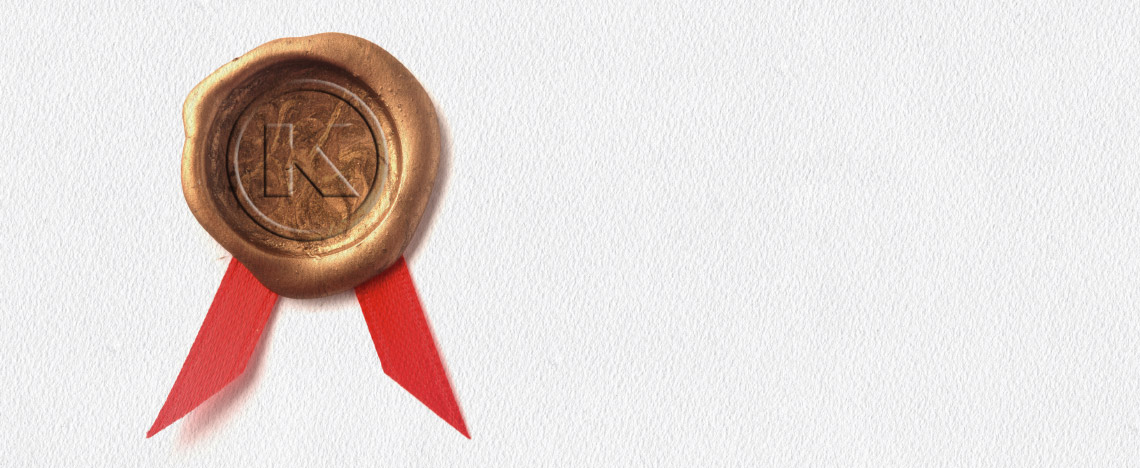לעילוי נשמת מרים בת מאיר דב
Dedicated to the memory of Miriam bas Meir Dov, Mrs. Miriam Wudowsky a”h, whose dedication to the kosher consumer, through her service in the Consumer Affairs and Trademark & Licensing departments, was unparalleled.
The Talmud (Shabbos 21b) cites the first example of a kashrus seal: The jugs of olive oil used in the Beis Hamikdash for lighting the Menorah bore the seal of the Kohen Gadol.
The practice of marking food as a sign of kashrus dates back at least as far as the 6th century. According to archeologists, Jews stamped their dough with impressions of the Menorah when preparing bread, as a way for consumers to verify its kashrus. One such clay stamp was recently discovered in an excavation near Akko.
Of course, much has changed in the world since the 6th century; today there are no less than 1,500 kashrus agencies worldwide, each with its own principles and trademarked symbol. This means that kosher consumers look out for the kosher symbols to make sure that the food they purchase for their homes and families meets their kosher standards and expectations. Likewise, food companies are well aware that the standards, reliability and familiarity of the kosher symbol on a product label are what determine its acceptability in the marketplace. We can be grateful to manufacturers for recognizing the importance of kosher, and for identifying their kosher standards by displaying the symbol in order to help make our kosher decisions easier.
OK Kosher’s commitment to maintaining the highest possible kosher standards and compliance without compromise is an integral part of our core principles and specialized practice. This is the guarantee our kosher seal represents to kosher consumers and we don’t take this responsibility lightly at OK Kosher.
Further, OK Kosher requires the companies we certify to place the correct kosher symbol (OK for pareve products, OK D for dairy products, OK P for Passover, etc.) on the product label, and this is checked on an ongoing basis by our rabbis and mashgichim. We are constantly vigilant, knowing that consumers rely on the OK to ensure that only products certified by OK Kosher carry our logo. During the course of over 80 years in the kosher certification industry, OK Kosher has developed an advanced label compliance system, including digital systems, which help our customers maintain OK Kosher’s stringent standards in an accessible, understandable, user-friendly way. From a food policy perspective, this system provides institutional checks and balances designed to prevent mistakes and misconduct.
Here is what you need to know:
Our foremost responsibility lies with the kosher consumer for complete transparency. Therefore, any time an error occurs, whether inadvertent or intentional – or a situation arises that could potentially create confusion – we issue a Kosher Alert as soon as possible to notify you the kosher consumer. If the product is not kosher or not kosher certified to OK standards, the OK will require an immediate market recall.
The OK Kosher symbol is a registered trademark, and its unauthorized use is a violation of trademark laws. Our rights in this regard are enforced to the fullest extent of the law. The OK symbol may not be used until a written contract has been executed with OK Kosher Certification. The OK aggressively protects the integrity of the OK symbol through its Trademark and Licensing Compliance Department (to be addressed in a different article).
However, that protection cannot completely eliminate unauthorized use of our symbol, or of any other trademark anywhere in the world. Therefore, both domestic and international markets are continuously monitored for unauthorized use of the OK Kosher symbol on a product label or website. In addition, an outside graphic designer who is designing new product labels, might copy or retain the OK on the label of an uncertified product. This type of error will be discovered during inspections at the facility and is usually quickly rectified. It can also happen that a label will be printed with the incorrect symbol (OK D when the product is actually pareve, or vice versa). This also will be found during the inspection.
Here is how you can help prevent kosher trademark violations:
There are several “flags” which can prompt a consumer to inquire regarding the authenticity of the kosher symbol on a product. Some examples include the following:
- The lack of a “D” or “Dairy”
- A statement next to the OK Kosher symbol used on products whose ingredient panel lists dairy ingredients. (Pareve products may bear an allergen disclaimer that they may contain milk, but this does not affect the pareve status of the product. When in doubt, please contact our consumer hotline.)
- Obvious non-kosher ingredients listed on the ingredient panel.
If you notice any of these anomalies, or are unsure about the authenticity of the OK on a product label, you can check our free OK Kosher Food Guide app in the Apple App Store and Android Marketplace, or our website http://www.ok.org/consumers/kosher-food-guide/). Or you can always reach our consumer hotline by phone at 718-756-7500.
When you call, please have the following information available:
- A copy of the product label
- The product name (as it appears on the product label).
- The brand name (as it appears on the product label).
- The manufacturer, distributor, or importers name (as it appears on the product label).
- The date code or production code information. (This information is usually ink jetted, printed or stamped on the product.)
Where and when the product was purchased. A receipt if possible.
Rest assured that we are working hard to protect our kosher symbol. Kosher without compromise is our focus.
For comments: [email protected]







